Set in a secluded den, through which the burn that powers it trickles, Barry Mill offers a rare glimpse into Scotland’s industrial heritage.
Today, it’s a haven of tranquillity, with birds tweeting in the surrounding woodlands, and wildflowers peppering the meadows.
It’s hard to imagine that the water-powered mill was once the bustling heart of the community – acting as the ‘convenience store’ and ‘gossip shop’, of its day.
For almost 800 years, its clattering cogs churned grain into flour and meal, and people would flock from far and wide to buy oatmeal and animal feed.
The mill was fully functional right up to 1982 when its commercial use came to an end, and was acquired by the National Trust for Scotland (NTS) six years later.
There were fears the historic attraction would be forced to close in 2009, but thanks to local support and external funding, it’s remained open.
Why visit Barry Mill?
Now, however, is a really exciting time to visit.
The mill has been brought back to life – and is producing flour for the first time in 43 years.
That’s thanks to a £30,000 donation from a mystery donor from Fife, which made restoration work of the mill’s mechanical system possible.
The donor – a long-time member of the NTS – gifted £2.4 million to support the charity’s projects across the north-east, with Barry Mill among them.
I’m super-excited to visit the mill, and, after enjoying a coffee from its spruced-up shop, I head inside with Mike Metcalfe, the visitor services supervisor.
Why were mills so important?
As various bits of machinery whirr, clunk, creak, clang and groan, I struggle to hear Mike speak.
“Mills were critical to people’s survival until the industrial revolution,” he tells me.
“The 1794 Ainslie map of Angus showed 141 meal mills. And in 1800, an estimated 60,000 mills in the UK were feeding the population.
“They were the food factories of their day. They were so integral to society for hundreds of years, but now they’re just relics.
“We think Barry Mill is the only one left capable of milling.”
While the attraction dates back to at least 1539, a fire necessitated a rebuild in 1814.
And today it remains the largest and finest example of its type still in operation.
A feat of engineering – in Angus
Down in the basement, Mike shows me a series of cogs, levers and gears, and explains how they control the mill’s power.
“The mill is powered by the Barry Burn,” he says. “There’s a working dam and lade half a mile upstream, which channel water to the mill wheel.
“Water comes in at the top of the wheel, and as it’s collected by 30 wooden buckets, gravity makes the wheel turn.
“The wheel powers a system of gears, pulleys, and shafts which in turn bring power to the sack hoist, the millstones, and a fan used to separate grain from chaff.”
Phrases derived from milling
Mike is on a roll. He’s brimming with anecdotes about the origins of everyday phrases which derived from milling.
There’s ‘milling around’ for starters. “Pre-1800, apart from churches, there aren’t many public places to congregate – so people go to the mill,” he explains.
“They trade, they barter, they keep warm by the fire kiln. They ‘mill around’.”
Other sayings abound. There’s ‘everything grinds to a halt’, ‘keep your nose to the grindstone’, ‘rule of thumb’, ‘grist to the mill’, ‘daily grind’, ‘put through the mill’, and more.
“Millers had very bad reputations – some of them for not being honest with their fair share!” Mike says.
Some charged exorbitant fees for grinding grain, and essentially, cheated farmers.
How does the mill work?
Three-storey Barry Mill contains a meal floor, a milling floor and a top, or ‘bin floor’.
Originally, oats arrived in sacks from neighbouring farms and had already been threshed.
The oats were then dried in the mill’s peat-fired kiln and sent down a chute to the meal floor to be collected in sacks again.
What strikes me is just how organic, and how noisy, the mill’s mechanisms are: it’s like a living beast.
It’s not only noisy, but it’s a potentially very dangerous environment.
In 1881, Robert Mackie, the miller, was killed after becoming entangled in the wheels.
It would have been a grisly demise, his body being mangled by cogs and machinery.
Upstairs, Mike allows me to operate the sack hoist, and as if by magic, a heavy bag of grain appears at the end of a piece of rope.
I shriek when I spot a huge rat sitting on a sack – thankfully, it’s not real.
Mike informs me there are 14 hidden around the mill, so keep your eyes peeled!
When are the milling demos?
Visitors can see the mill in action at demonstrations on Fridays. Why only once a week?
“They millstones are very old,” explains Mike. “A millstone was a lifetime investment for a miller, lasting 40 or 50 years.
“We think we’ve only got four to ten years on these. If we milled daily, their life would be cut short.”
Outside, we check out a charming stone bridge dating from 1775.
“Its low parapets allowed the axels of replacement mill stones to pass as they were rolled across,” Mike explains.
“They often began their journey in France, where a quarry outside Paris offered the hardest-wearing burr stone.”
Why you should take wee walk
Our mill tour complete, Mike suggests walking along a lovely path to the millpond and weir.
“It’s really tranquil, and a great way to understand the engineering behind getting the water to power the wheel,” he says.
“There’s loads of wildlife, too. There’s a pair of dippers with three chicks on the other side of the weir. It’s quite a spectacle.”
As we stroll, we meet volunteers clearing weeds and debris from around the pond.
These folk do everything from thinning woodland and maintaining machinery to organising events, including the upcoming duck race on May 11.
Restoration in progress
The mill’s restoration work is part of a wider 10 year maintenance and repair plan.
The first phase of the repairs, which started in October 2023, was completed by the NTS’s building conservation team, complemented by specialist contractors.
This included the replacement of the water wheel shaft, repair of the wheel shaft’s bearings, and full repair of the water wheel and the ‘teeth’ of the internal gear mechanism and its supporting structure.
It also saw the replacement of the water buckets and the mill’s sluice gate.
- Special milling tours at Barry Mill run on Fridays, at 11am, midday and 2pm.
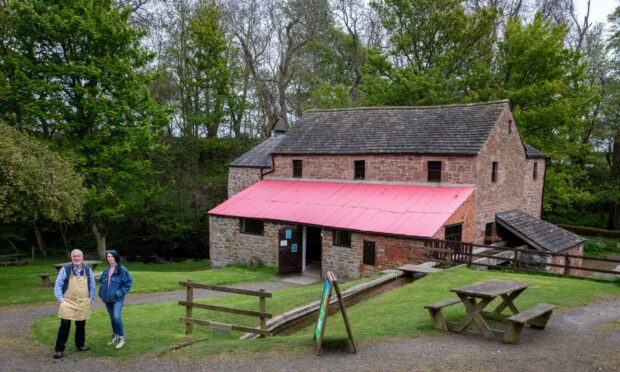
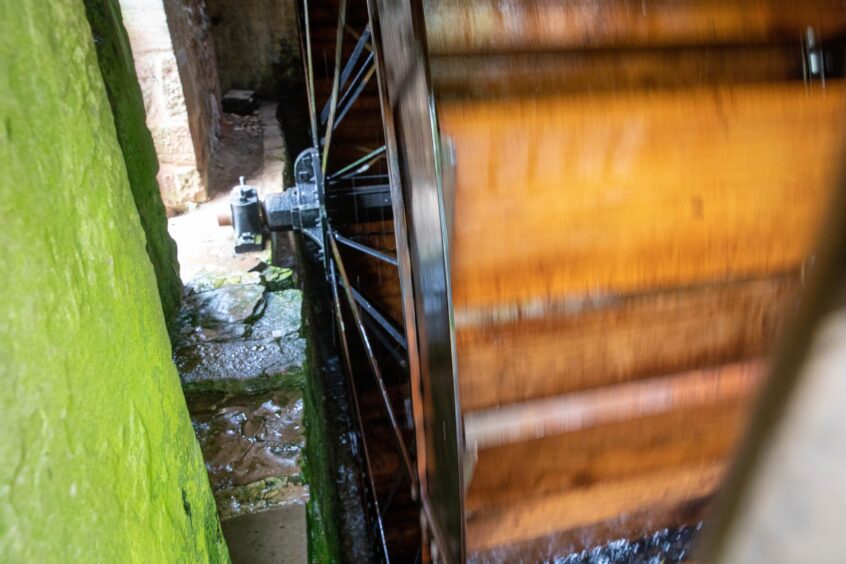
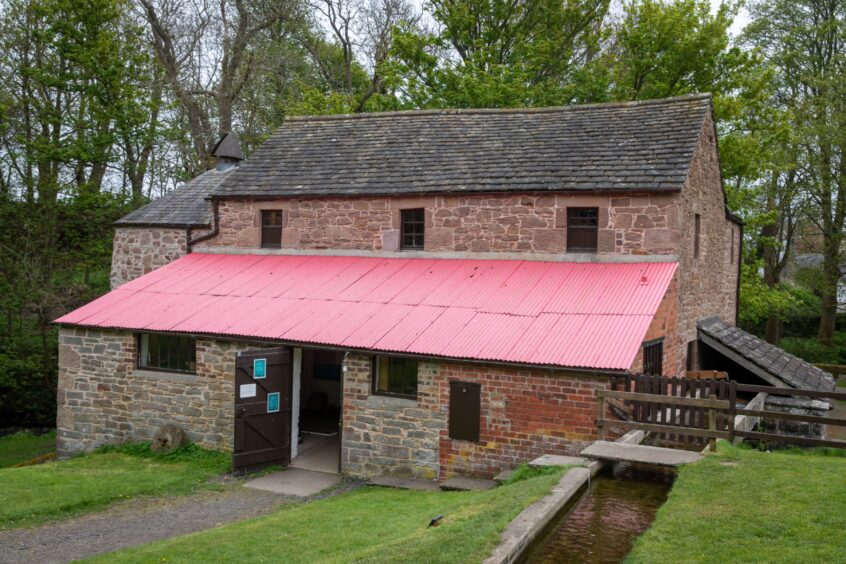
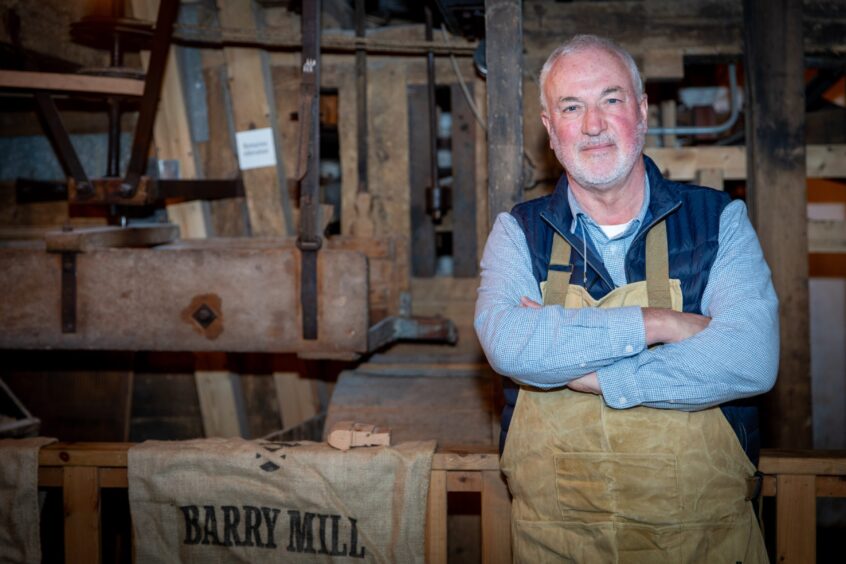
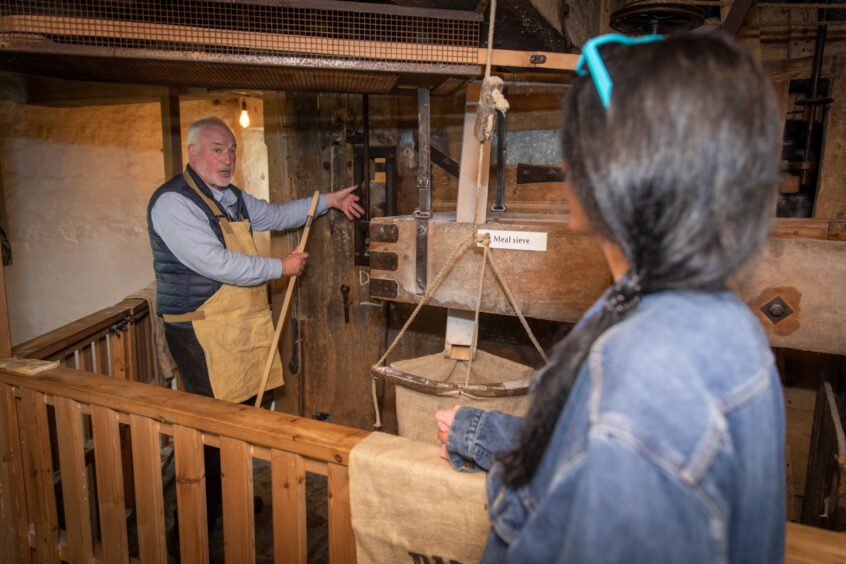
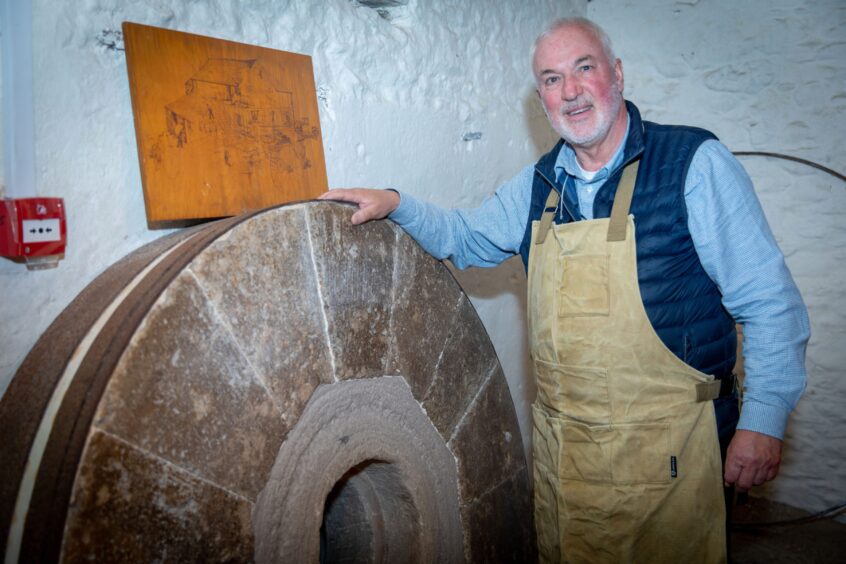
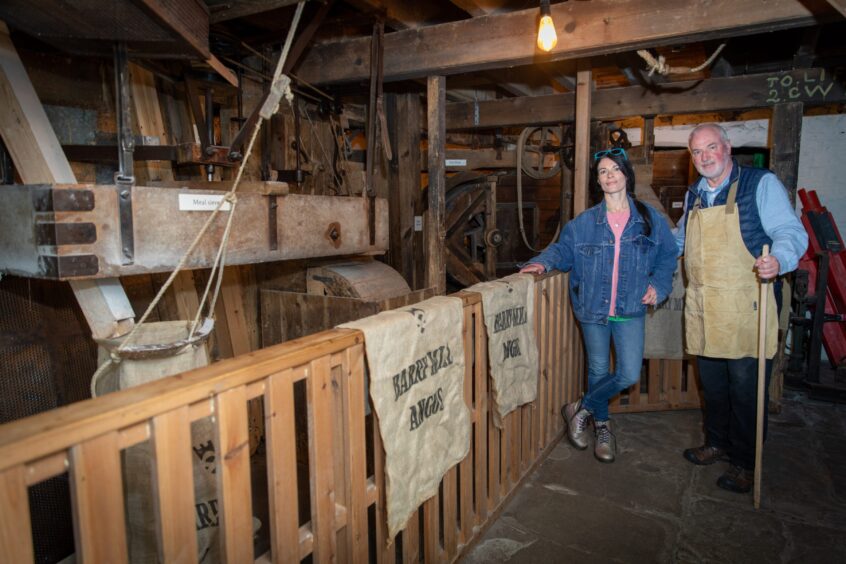
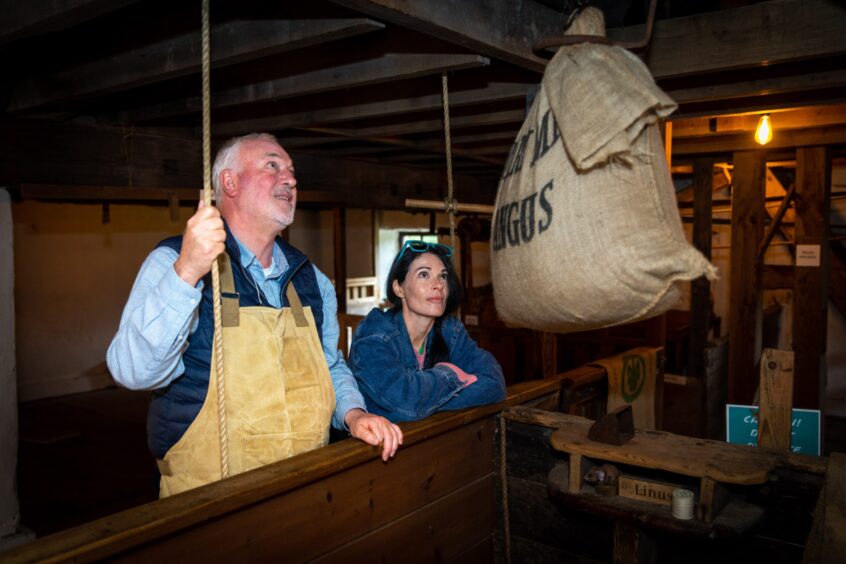
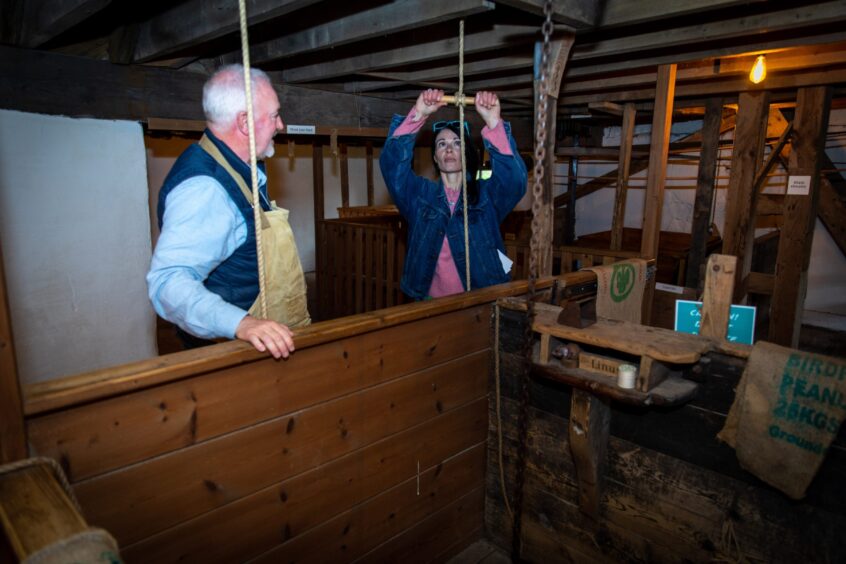
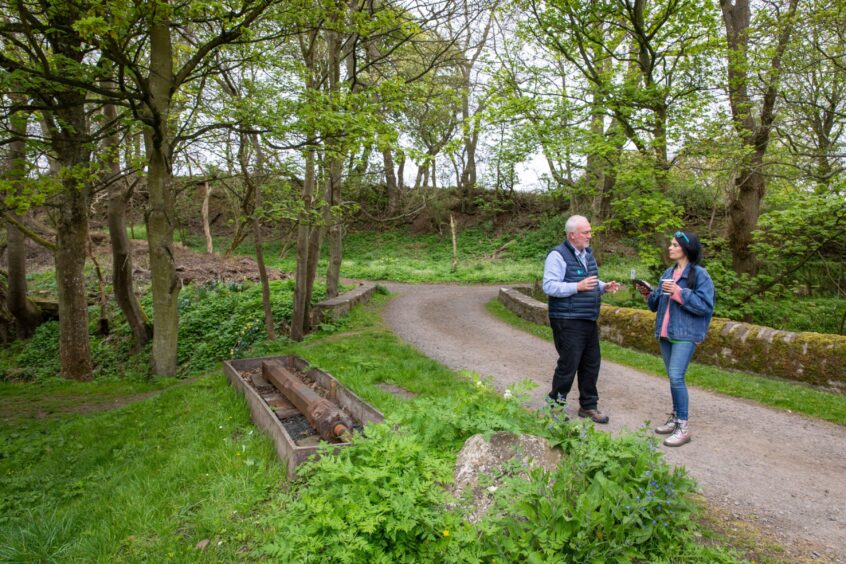
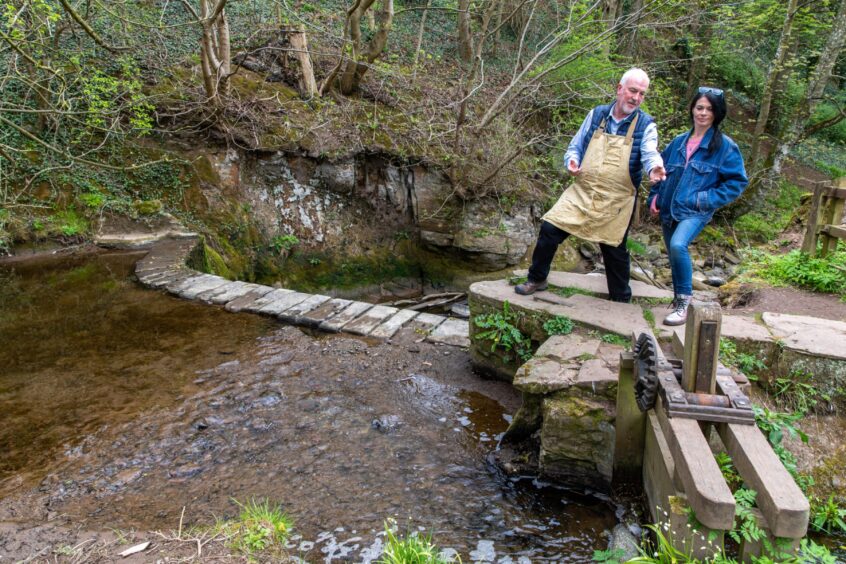
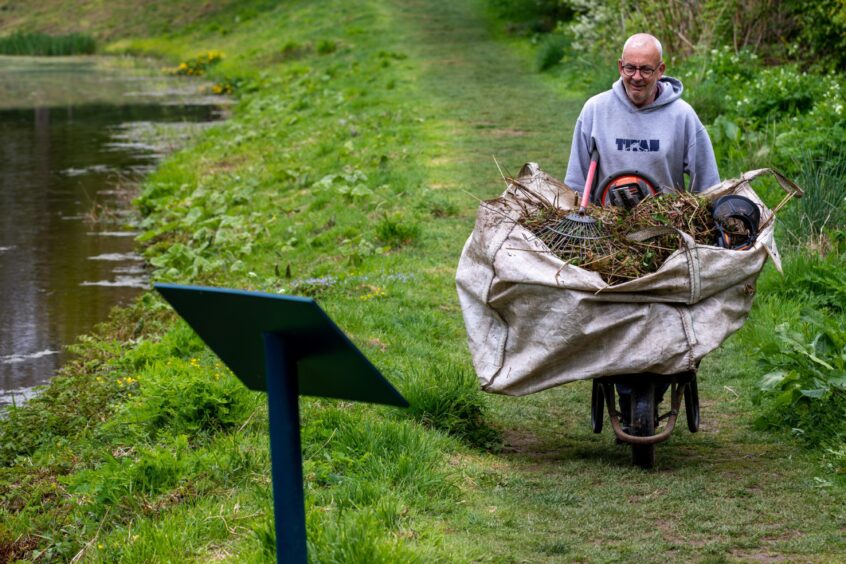
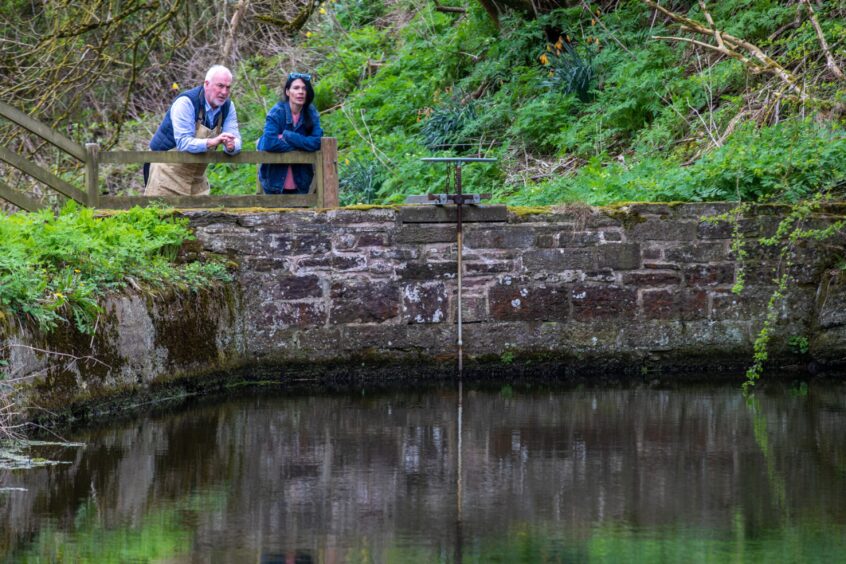
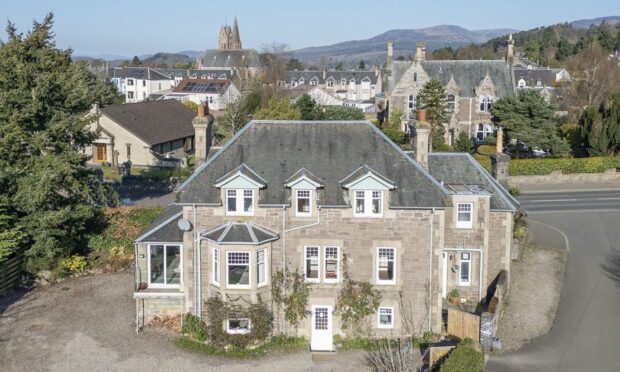
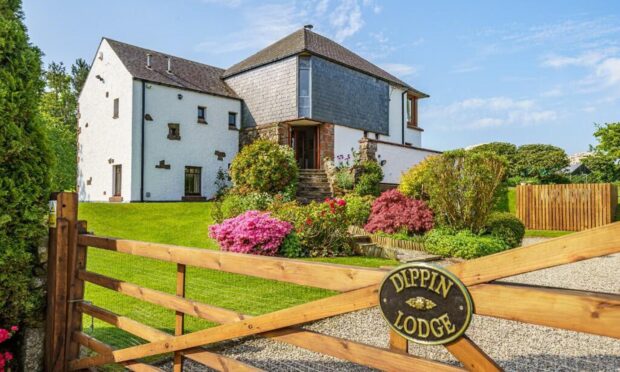


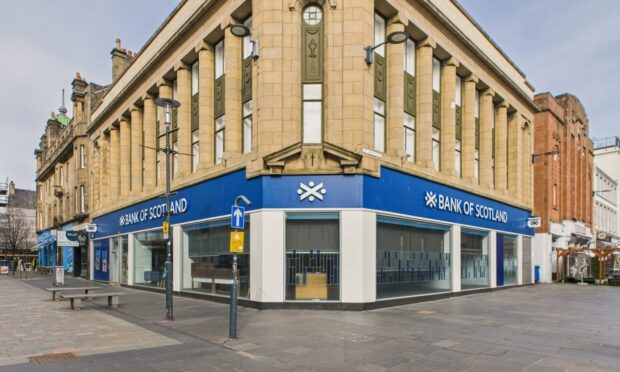



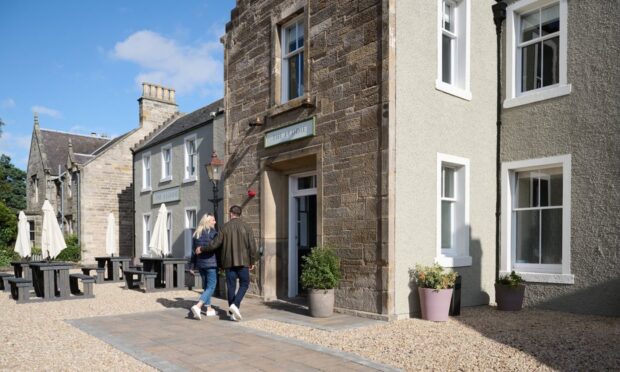
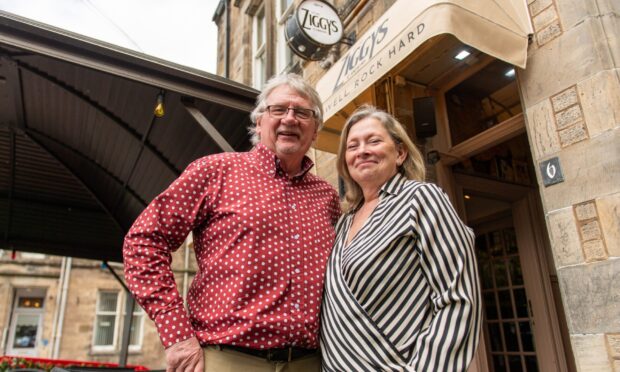
Conversation